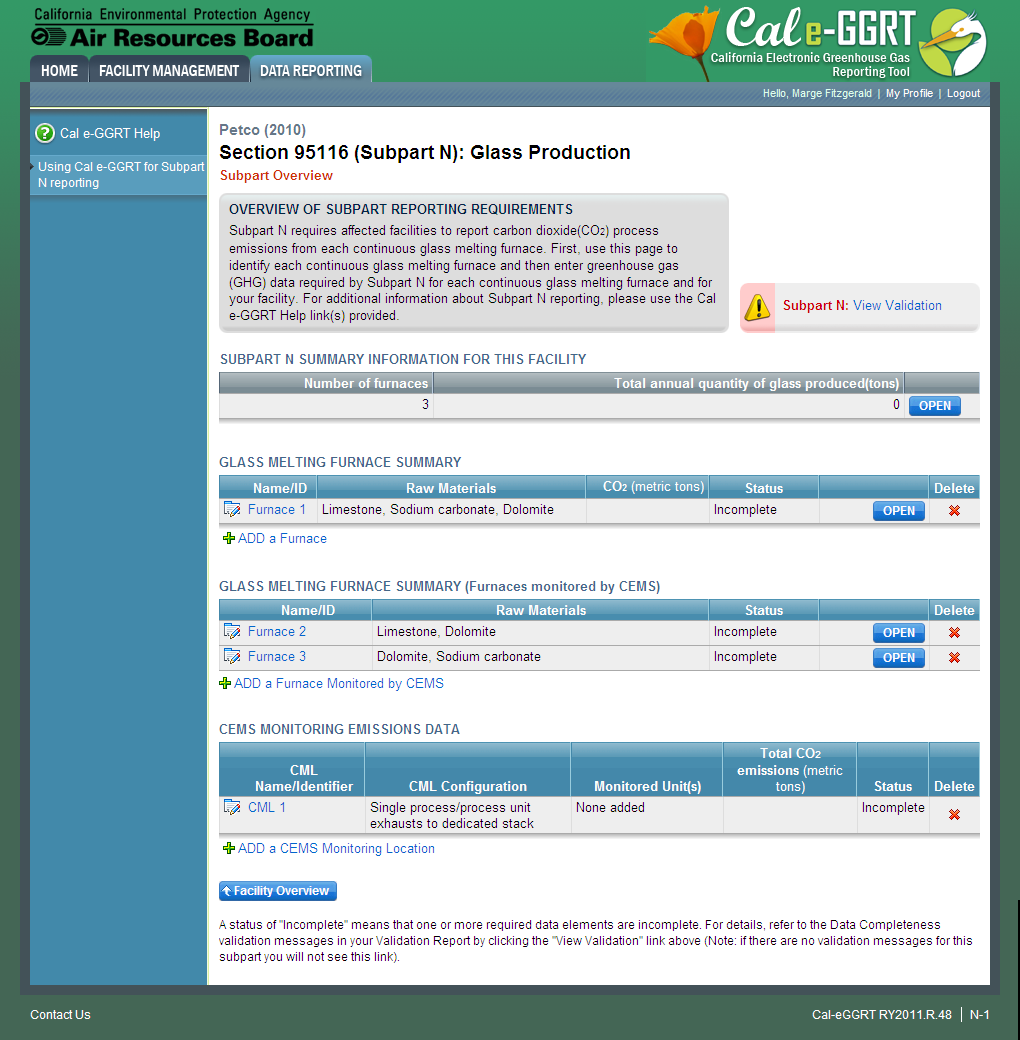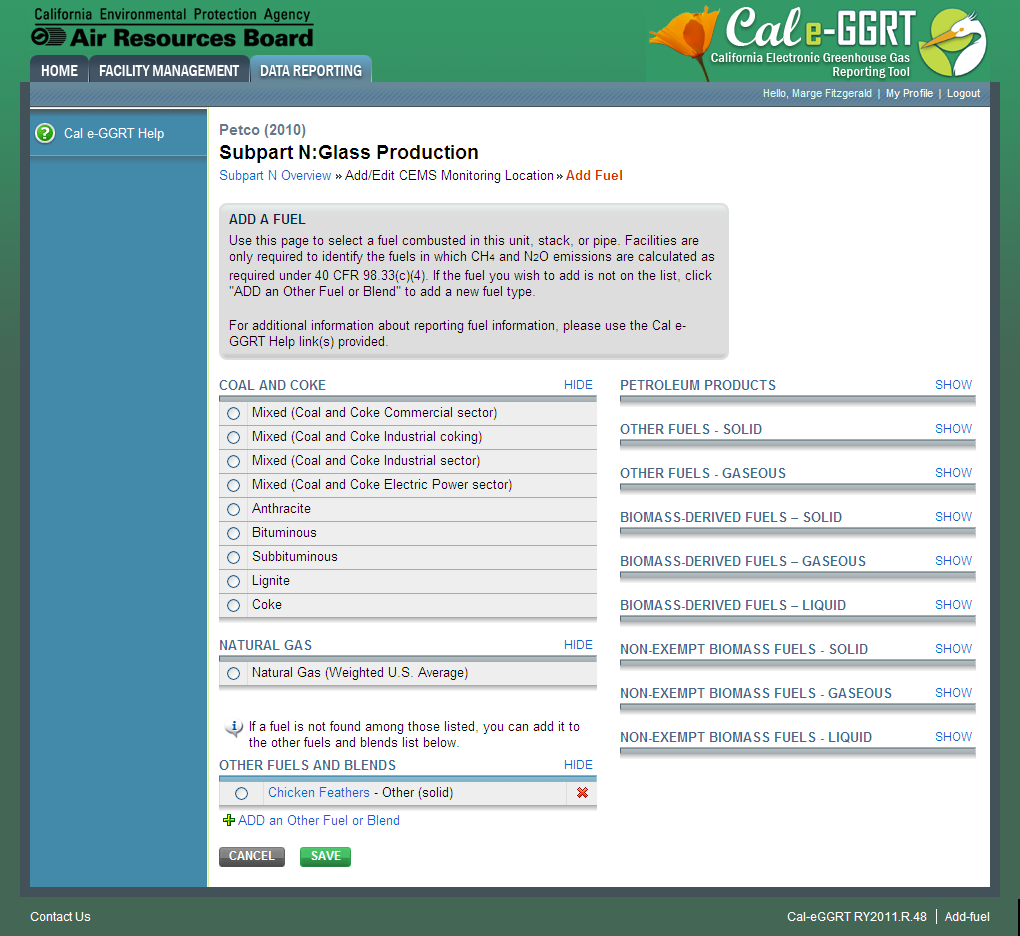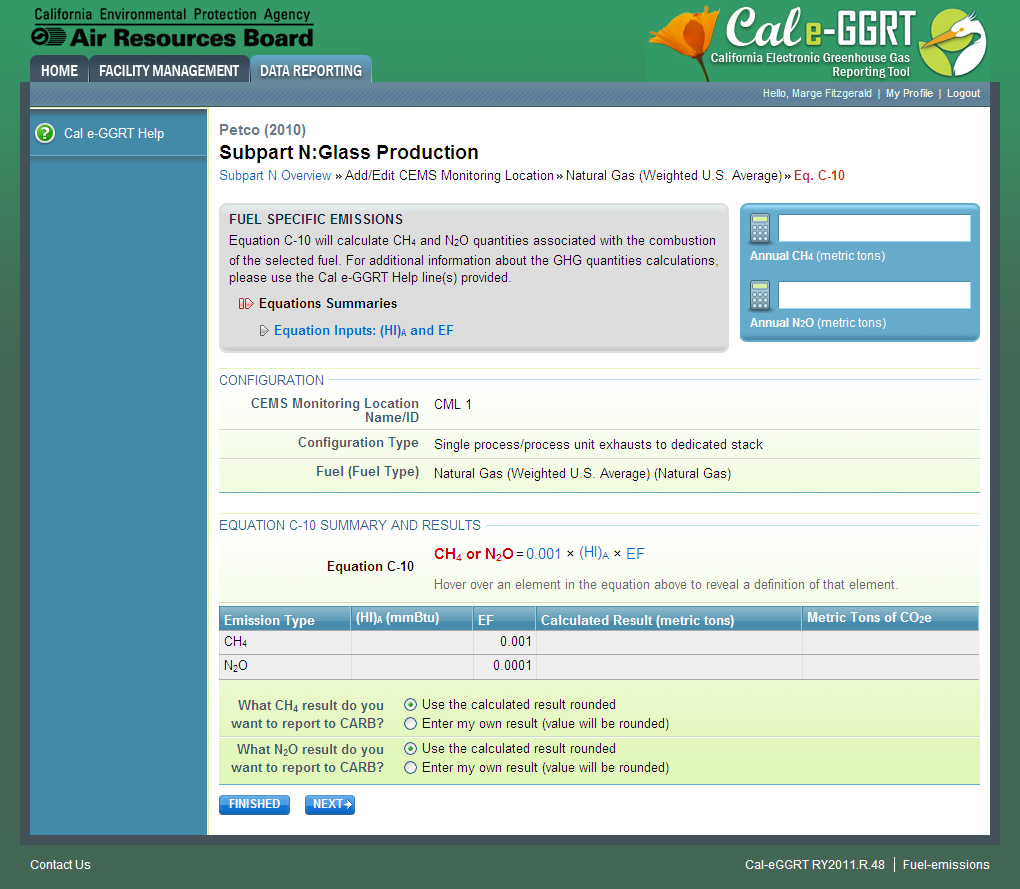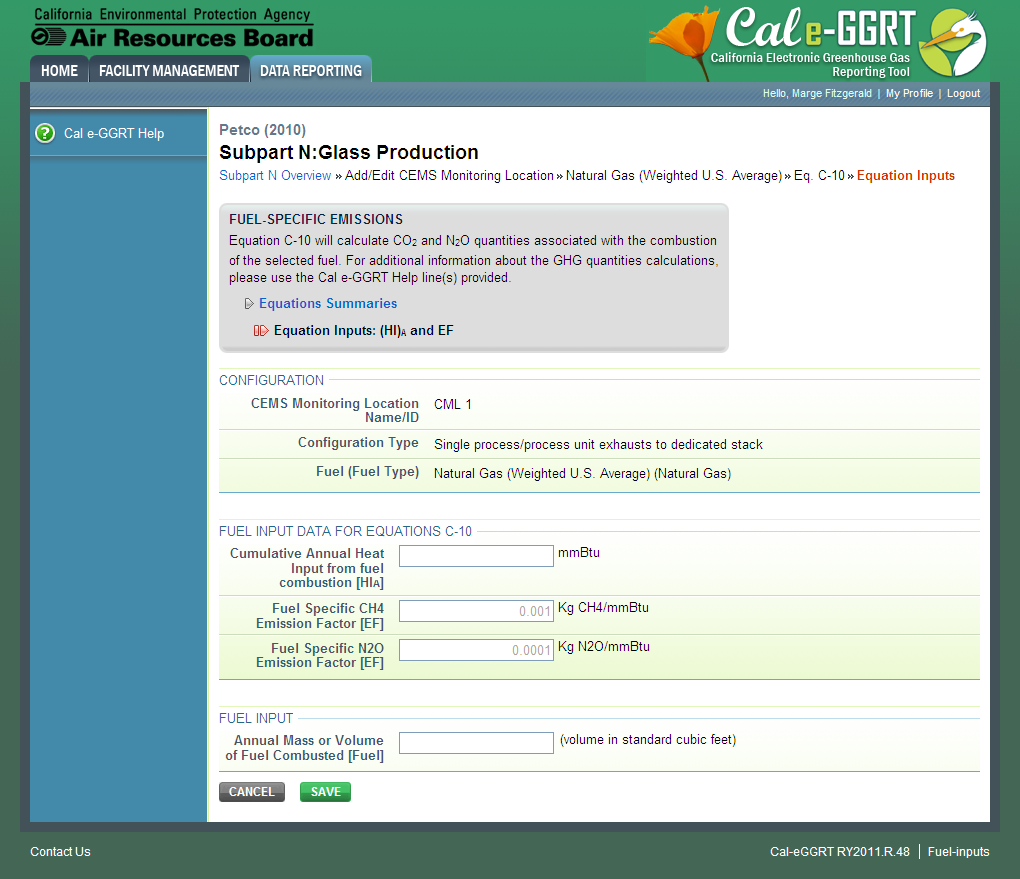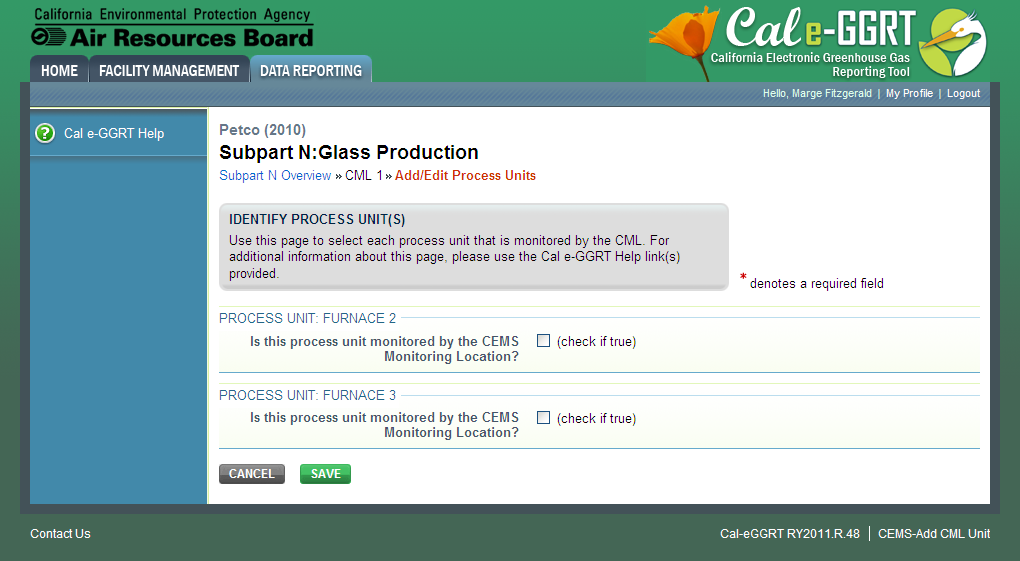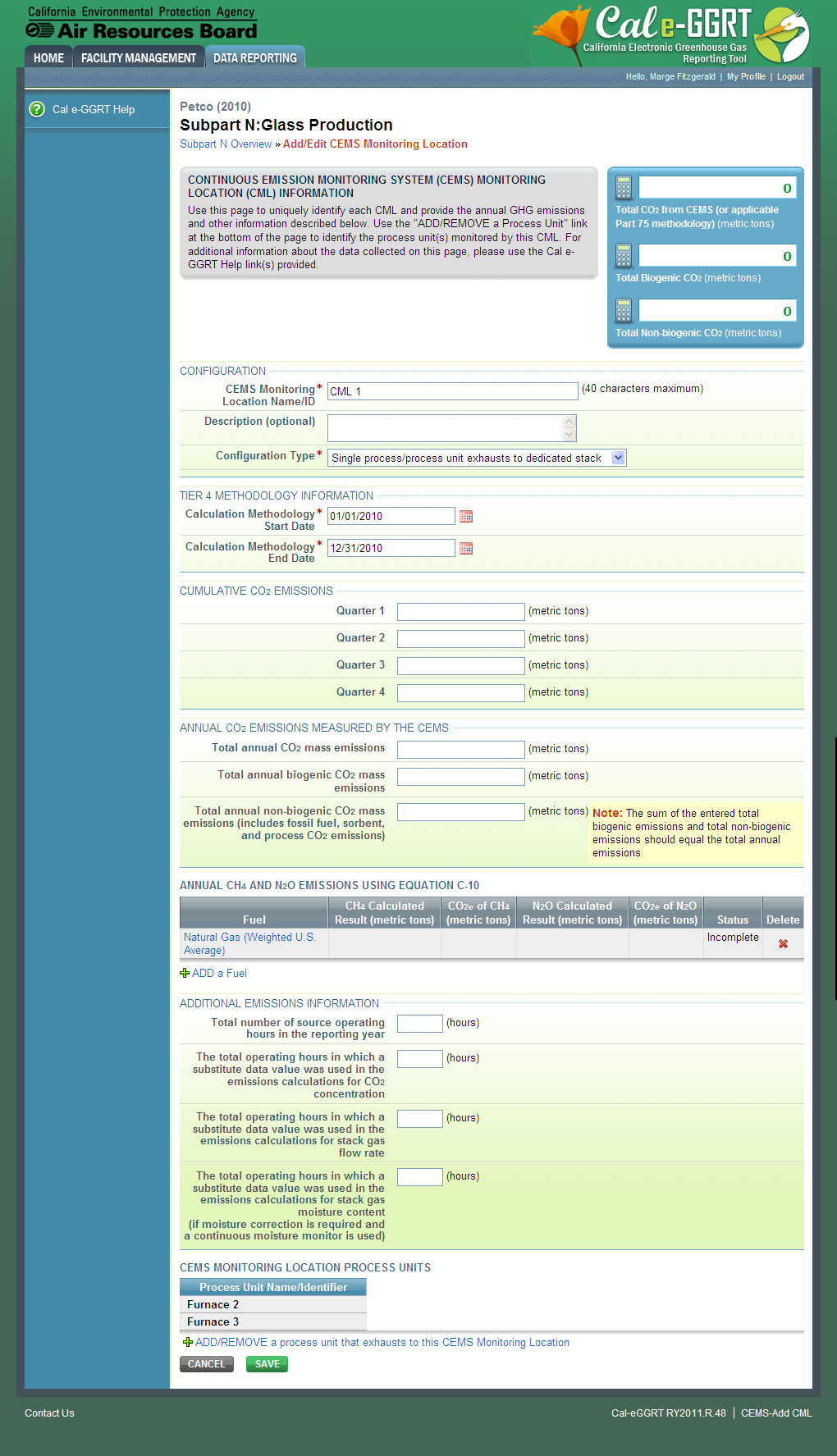To add a CEMS Monitoring Location (CML), click the “Add a CEMS Monitoring Location” link below the CEMS MONITORING LOCATION SUMMARY table on the Subpart Overview page The screenshot below is from Subpart N and is displayed as an example. The screen for other subparts may differ slighty.
For each CEMS Monitoring Location, provide the following information: To calculate CH4 and N2O emissions, click on ADD A FUEL.
On the following screen, select the fuel combusted in this unit, stack, or pipe, and click SAVE.
Select the Facility Overview screen, click the new fuel in the list, and decide whether you will use Equation C-10 to calculate CH4 and N2O emissions or enter your own results. If you elect to enter your own data, select the radio button and enter the required data, then click NEXT.
On the Equation Inputs screen, enter the required data. When finished, select SAVE to return to the previous page where CH4 and N2O emissions will be automatically calculated. Click FINISHED to save your fuel data.
Repeat for each fuel feeding the CEMS monitoring location. For each CEMS Monitoring Location, provide the following additional information: Do not leave any of these fields blank. If, for example, your facility has no biogenic CO2 emissions, enter '0'. To identify the process units monitored at a CML, first click the link titled “ADD/REMOVE a process unit that exhausts to this CEMS Monitoring Location” at the bottom of the page The screenshot below is from Subpart N and is displayed as an example. The screen for other subparts may differ slighty.
On the CML Process Units Selection page, use the check boxes to select the process unit(s) monitored at this CML. This will indicate that the unit(s) selected vent emission through the stack monitored by this CML. The screenshot below is from Subpart N and is displayed as an example. The screen for other will differ slightly depending on the number of units with emissions monitored by a single CML at your facility.
If you are reporting under Subpart Y, you are also required to enter the CO2 emissions from this CEMS Monitoring Location that are attributable to process CO2 emissions from this process unit (metric tons).
When finished selecting process unit for the CML and entering additional required information (if applicable), click SAVE. You should then be directed back to the Add/Edit a CML Location form and see the units you selected listed in the CEMS MONITORING LOCATION PROCESS UNITS table. When you have finished entering data for a CML, click SAVE. You will then return to the Subpart Overview page. You will see the status of data entry for the CML updated to “Complete” in the Status column in the CEMS MONITORING LOCATION SUMMARY table. If you don't have all the data, you can enter some now, save it, and finish later by clicking on the hyperlinked name of the CML in the CEMS MONITORING LOCATION SUMMARY table. After you save the data on this page, the next time you open the page, the calculator on the top of the page will display the CO2 process emissions for the CML, rounded to the nearest metric ton: the value displayed is for informational purposes only Note: the screenshot below is from Subpart N and is displayed as an example. The screen for other subparts will differ slighty.
Repeat Steps 1-4 until emissions information has been entered for all CEMS Monitoring Locations. If you have missed something, the validation report messages will help you identify any incomplete entries.Step 1: Add a CEMS Monitoring Location (CML)
Step 2: Define a CML and report emissions information
CML, please enter '0'_)Step 3: Add Fuels to Calculate CH4 and N2O Emissions
Step 4: Enter Additional Emissions Information
Step 5: Identify process units monitored at a CML
Step 6: Save entered data for a CML
Step 7: Repeat Steps 1-4
CML Information Instructions
Note: The Cal e-GGRT help system includes general instruction on using the California GHG reporting tool. However, the help system may not explain differences between California and U.S. EPA reporting requirements. Please refer to the ARB reporting website for California-specific reporting requirements and additional help.
Overview
Content Tools
ThemeBuilder
Tasks


